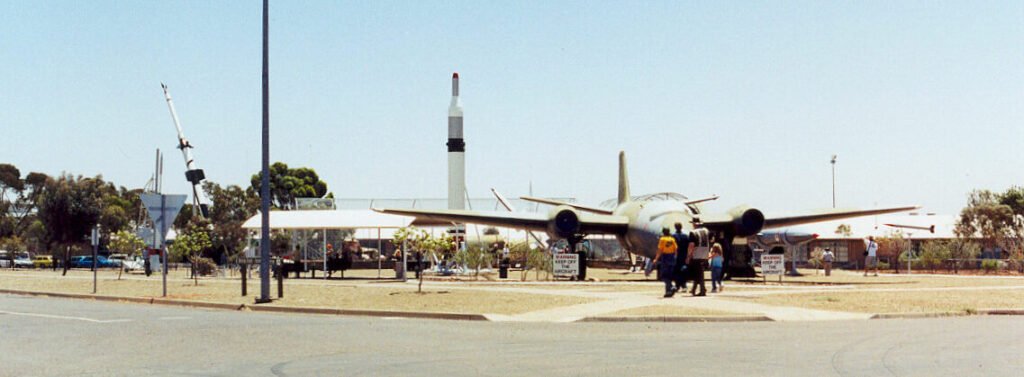In a cosmic battle 3.8 billion light-years away, two galaxy clusters crashed into each other with such force that they tore apart the fabric of spacetime. This left behind a lot of clues about dark matter. NASA’s James Webb Space Telescope (JWST) has now given us the clearest picture yet of the Bullet Cluster, a cosmic wreckage that has been shrouded in mystery for a long time. The new picture, which combines JWST’s near-infrared vision with Chandra X-ray Observatory’s sharp view, shows dark matter’s ghostly fingerprints in amazing detail. It also makes us wonder about the cluster’s violent past and the mysterious nature of the universe’s most elusive substance.
A Cosmic Collision Frozen in Time
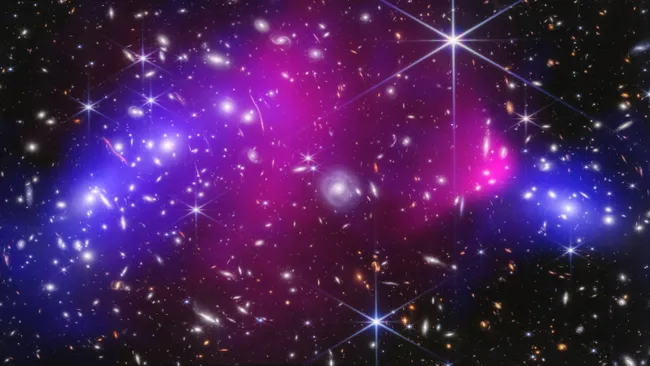
The Bullet Cluster isn’t just a picture of a crash; it’s a crime scene in space. Two galaxy clusters, each weighing trillions of suns, crashed into each other about 150 million years ago at speeds so high that they break all known models of how the universe changes over time. The JWST image of the aftermath shows a clear difference between the clusters’ dark matter (mapped in blue using gravitational lensing) and their hot gas (glowing pink in X-rays). The dark matter, on the other hand, sailed through the collision without being hurt, which suggests that it doesn’t interact much with itself or with regular matter.
But the real shock? The dark matter halo around the bigger cluster isn’t smooth. It has been pulled into a strange, hammerhead shape, which makes it look like this wasn’t a clean head-on crash. James Jee, one of the study’s authors, says, “It’s like finding skid marks at a car crash that point to a high-speed chase beforehand.” The deformation suggests that the cluster went through a lot of mergers before this famous collision, changing the story of how it came to be.
Gravitational Lensing: Webb’s Dark Matter Detective Tool
The invisibility of dark matter makes it exceedingly difficult to study, but JWST has turned the Bullet Cluster into some form of a magnifying glass. By assessing the extent to which the cluster’s gravity distorts the light of more distant background galaxies (the effect is known as gravitational lensing), the team produced the most sophisticated dark matter atlas to date. “Think of it as observing ripples in a pond distort the view of pebbles resting on the bottom,” Jee illustrates. “The ‘water’ is dark matter, and the ‘pebbles’ are galaxies positioned behind it.”
What is Webb’s secret weapon? Its capacity to uncover intracluster light the dim glow from the outside of stars that gets torn apart during the galactic clash. These stars then serve as breadcrumbs which help in ascertaining dark matter’s contours thereby proving that they are indeed bound to dark matter. “For the first time, we are applying intracluster light as GPS for dark matter,” comments leading author Sangjun Cha.
Dark Matter’s “Non-Stick” Property Confirmed
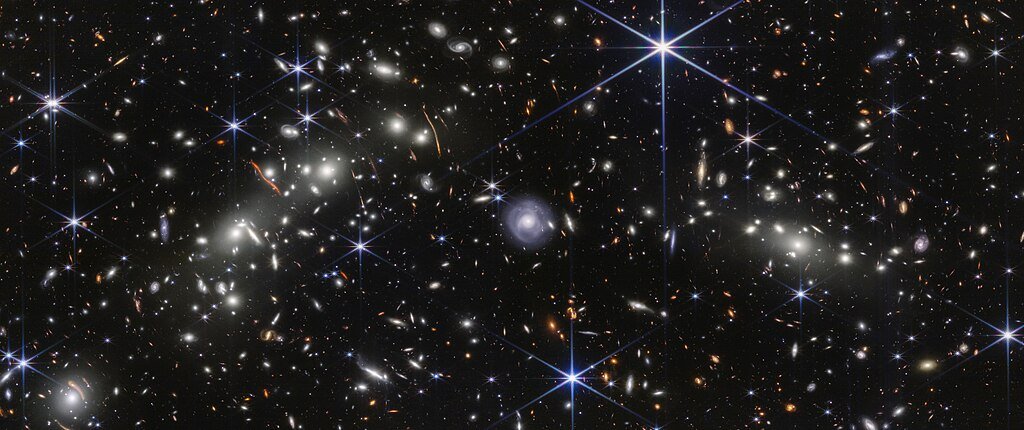
One of the major unsolved problems in physics is trying to figure out whether dark matter particles interact with one another. The latest results from the bullet cluster portrait decisively answers: just barely. If dark matter self-interacted in a way similar to baryonic matter, it would have been left behind like the hot gas, but JWST found dark matter tightly bound to the galaxies. This is evidence for its particles being “slippery,” having a self-interaction cross-section of less than 0.5 cm²/g. This is the tightest constraint yet, eliminating more theoretical models.
Kyle Finner, a coauthor from Caltech, explains, “The fact that dark matter didn’t get dragged out with the gas is like watching a ghost walk through a wall. It’s eerily indifferent to everything but gravity.”
A Violent History: More Than One Cosmic Crash?
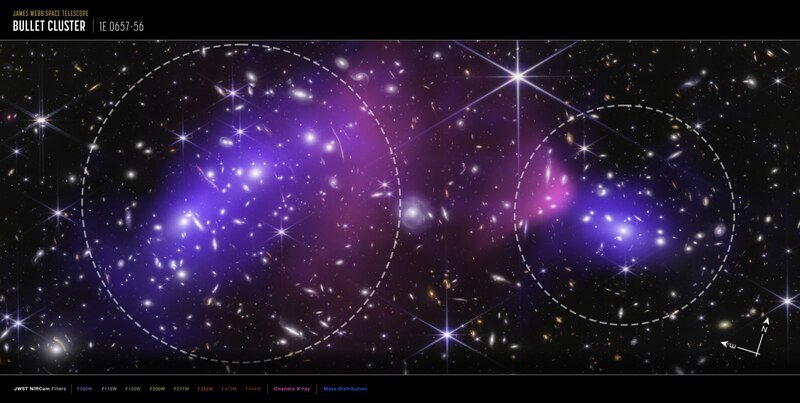
Astronomers are wondering what happened in the past with the Bullet Cluster because it is asymmetrical. The long dark matter halo around the bigger cluster, which is full of smaller clumps, suggests that it has merged with other clusters in the past. “This wasn’t a neat bullet going through a target; it was more like a demolition derby,” Jee says. Simulations show that the cluster may have taken in smaller groups before the main collision, leaving behind a “hammerhead” of dark matter.
What makes it even more confusing? The speed at which the clusters collide. Some physicists say it’s so high that it goes against the standard model of cosmology. Cha says, “This system is pushing the limits of what we think is possible.” NASA’s Roman Space Telescope could settle the argument by mapping the mass of the whole cluster in the future.
The Roman Space Telescope’s Coming Revolution
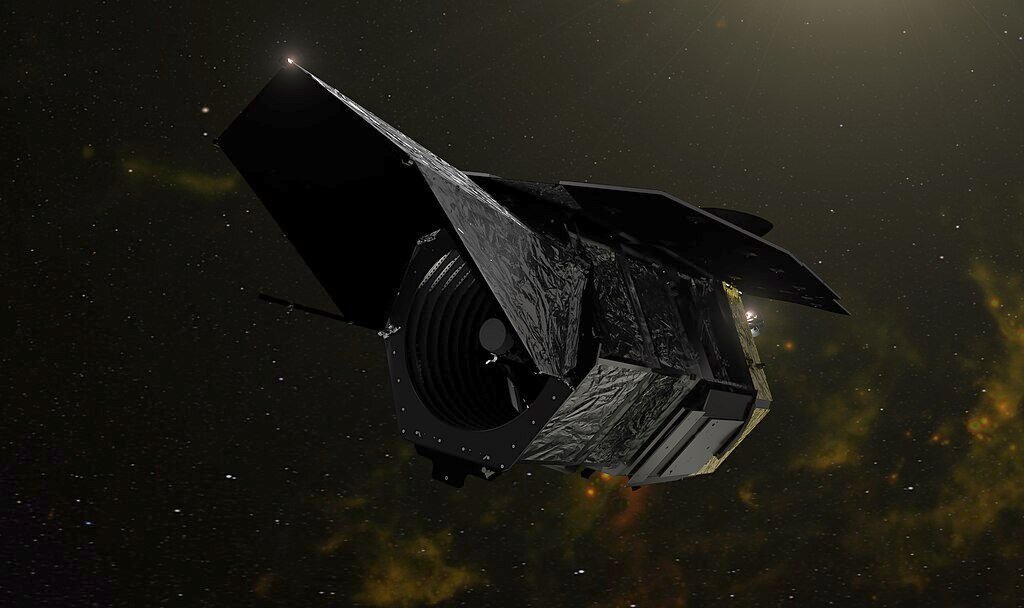
JWST’s view of the Bullet Cluster is new and exciting, but it’s not complete. “We’re only seeing the ‘head’ of a giant,” Jee says. Nancy Grace Roman Space Telescope from NASA will launch by 2027. Roman will be able to see 100 times more than Hubble, which will let it capture the whole area of debris from the crash and make 3D models of it. Finner says, “It’s like going from a close-up of a dinosaur bone to the whole skeleton.”
Roman’s surveys could also find hundreds of other colliding clusters, which would help physicists figure out more about dark matter. Cha says, “The Bullet Cluster is just the opening act.”
Why This Matters: The Universe’s Hidden Architect
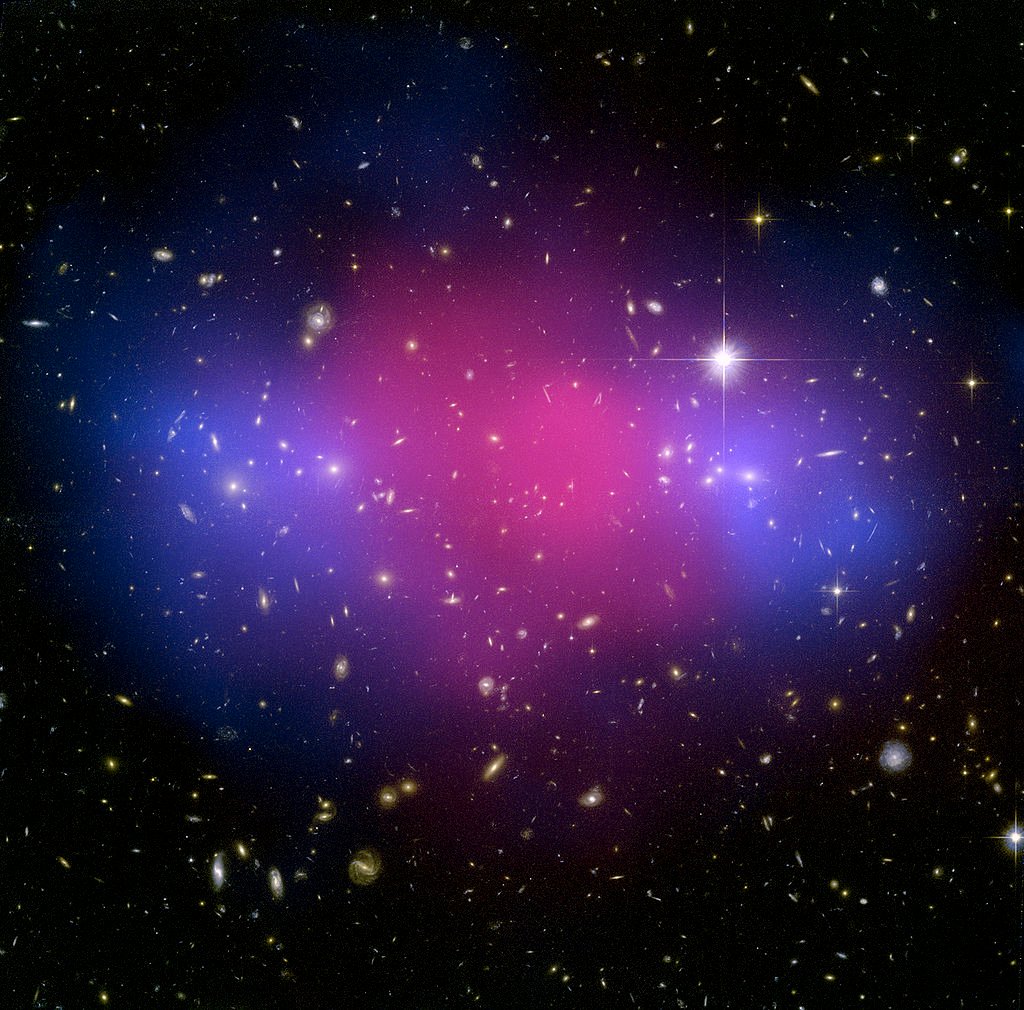
We don’t know what dark matter is made of, but it makes up 85% of all the matter in the universe. The latest close-up of the Bullet Cluster gives us some ideas and shows us how much more work needs to be done. “Every time we think we know what dark matter is, it throws us a curveball,” Jee says. We haven’t been surprised by this cosmic wreckage yet. It could be because the cluster has a strange structure, the collision is happening at a strange speed, or dark matter is shy.
Sources:

Suhail Ahmed is a passionate digital professional and nature enthusiast with over 8 years of experience in content strategy, SEO, web development, and digital operations. Alongside his freelance journey, Suhail actively contributes to nature and wildlife platforms like Discover Wildlife, where he channels his curiosity for the planet into engaging, educational storytelling.
With a strong background in managing digital ecosystems — from ecommerce stores and WordPress websites to social media and automation — Suhail merges technical precision with creative insight. His content reflects a rare balance: SEO-friendly yet deeply human, data-informed yet emotionally resonant.
Driven by a love for discovery and storytelling, Suhail believes in using digital platforms to amplify causes that matter — especially those protecting Earth’s biodiversity and inspiring sustainable living. Whether he’s managing online projects or crafting wildlife content, his goal remains the same: to inform, inspire, and leave a positive digital footprint.



